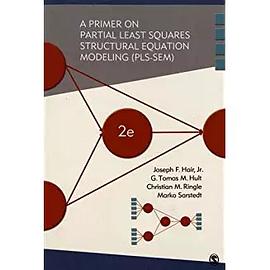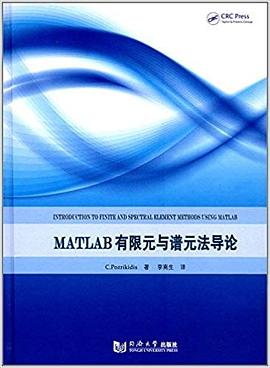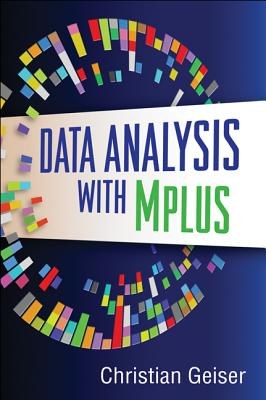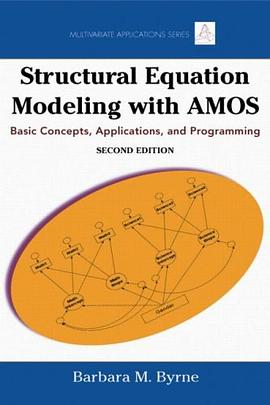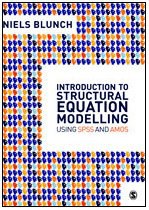Preface
About the Authors
Chapter 1: An Introduction to Structural Equation Modeling
Chapter Preview
What Is Structural Equation Modeling?
Considerations in Using Structural Equation Modeling
Composite Variables
Measurement
Measurement Scales
Coding
Data Distributions
Structural Equation Modeling With Partial Least Squares Path Modeling
Path Models With Latent Variables
Measurement Theory
Structural Theory
PLS-SEM, CB-SEM, and Regressions Based on Sum Scores
Data Characteristics
Model Characteristics
Organization of Remaining Chapters
Summary
Review Questions
Critical Thinking Questions
Key Terms
Suggested Readings
Chapter 2: Specifying the Path Model and Examining Data
Chapter Preview
Stage 1: Specifying the Structural Model
Mediation
Moderation
Higher-Order and Hierarchical Component Models
Stage 2: Specifying the Measurement Models
Reflective and Formative Measurement Models
Single-Item Measures and Sum Scores
Stage 3: Data Collection and Examination
Missing Data
Suspicious Response Patterns
Outliers
Data Distribution
Case Study Illustration—Specifying the PLS-SEM Model
Application of Stage 1: Structural Model Specification
Application of Stage 2: Measurement Model Specification
Application of Stage 3: Data Collection and Examination
Path Model Creation Using the SmartPLS SoftwareSummary
Review Questions
Critical Thinking Questions
Key Terms
Suggested Readings
Chapter 3: Path Model Estimation
Chapter Preview
Stage 4: Model Estimation and the PLS-SEM Algorithm
How the Algorithm Works
Statistical Properties
Algorithmic Options and Parameter Settings to Run the Algorithm
Results
Case Study Illustration—PLS Path Model Estimation (Stage 4)
Model Estimation
Estimation Results
Summary
Review Questions
Critical Thinking Questions
Key Terms
Suggested Readings
Chapter 4: Assessing PLS-SEM Results Part I: Evaluation of Reflective Measurement
Models
Chapter Preview
Overview of Stage 5: Evaluation of Measurement Models
Stage 5a: Assessing Results of Reflective Measurement Models
Internal Consistency Reliability
Convergent Validity
Discriminant Validity
Case Study Illustration—Reflective Measurement Models
Running the PLS-SEM Algorithm
Reflective Measurement Model Evaluation
Summary
Review Questions
Critical Thinking Questions
Key Terms
Suggested Readings
Chapter 5: Assessing PLS-SEM Results Part II: Evaluation of the Formative Measurement
Models
Chapter Preview
Stage 5b: Assessing Results of Formative Measurement Models
Step 1: Assess Convergent Validity
Step 2: Assess Formative Measurement Models for Collinearity Issues
Step 3: Assess the Significance and Relevance of the Formative Indicators
Bootstrapping Procedure
Case Study Illustration—Evaluation of Formative Measurement ModelsExtending the Simple Path Model
Reflective Measurement Model Evaluation
Formative Measurement Model Evaluation
Summary
Review Questions
Critical Thinking Questions
Key Terms
Suggested Readings
Chapter 6: Assessing PLS-SEM Results Part III: Evaluation of the Structural Model
Chapter Preview
Stage 6: Assessing PLS-SEM Structural Model Results
Step 1: Collinearity Assessment
Step 2: Structural Model Path Coefficients
Step 3: Coefficient of Determination (R2 Value)
Step 4: Effect Size f2
Step 5: Blindfolding and Predictive Relevance Q2
Step 6: Effect Size q2
Case Study Illustration—How Are PLS-SEM Structural Model Results Reported?
Summary
Review Questions
Critical Thinking Questions
Key Terms
Suggested Readings
Chapter 7: Mediator and Moderator Analysis
Chapter Preview
Mediation
Introduction
Types of Mediation Effects
Testing Mediating Effects
Measurement Model Evaluation in Mediation Analysis
Multiple Mediation
Case Study Illustration—Mediation
Moderation
Introduction
Types of Moderator Variables
Modeling Moderating Effects
Creating the Interaction Term
Results Interpretation
Moderated Mediation and Mediated Moderation
Case Study Illustration—Moderation
Summary
Review Questions
Critical Thinking Questions
Key TermsSuggested Readings
Chapter 8: Outlook on Advanced Methods
Chapter Preview
Importance-Performance Map Analysis
Hierarchical Component Models
Confirmatory Tetrad Analysis
Dealing With Observed and Unobserved Heterogeneity
Multigroup Analysis
Uncovering Unobserved Heterogeneity
Measurement Model Invariance
Consistent Partial Least Squares
Summary
Review Questions
Critical Thinking Questions
Key Terms
Suggested Readings
Glossary
References
Author Index
Subject Index
· · · · · · (
收起)
